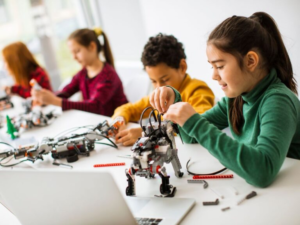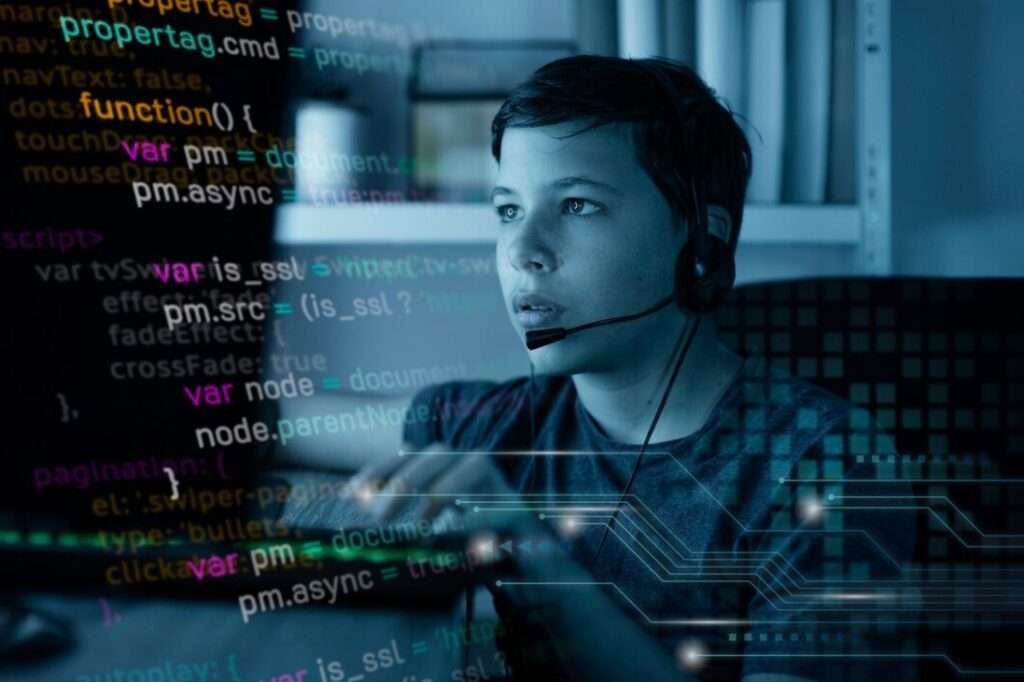Asa lifelong learner, I’ve always been intrigued by the intersection of Technology and Education. The incorporation of robotics into various academic subjects has emerged as a powerful catalyst for learning, sparking curiosity and innovation in students across the globe. It’s a remarkable journey that transforms seemingly abstract subjects into tangible, engaging experiences.

Think about Mathematics, an area that often leaves students feeling perplexed. But now, envision the classroom buzzing with excitement as students witness robots gracefully navigating geometric patterns. Robots like the Sphero SPRK+ and Ozobot Bit teach math and make it an interactive adventure. They demonstrate abstract concepts such as angles, symmetry, and shapes in action, igniting a passion for math I never thought possible.
Science, too, has seen a revolution with Robotics. Drones equipped with cameras soar through the skies, not just as gadgets but as invaluable tools for environmental science. These airborne explorers collect data on ecosystems and wildlife, enabling us to better understand and protect our planet. On a smaller scale, miniature robots dive into the world of chemistry, performing experiments with unmatched precision and safety, cultivating a deep appreciation for the scientific process.

Art, a realm I’ve always found captivating, has embraced robotics in a surprising union of creativity and technology. Robots wield brushes and sculpting tools, producing artworks, and even composing music. The “Robot art” competition showcases how these mechanical artists autonomously create stunning pieces, pushing the boundaries of human creativity. It’s a testament to the limitless possibilities when art and technology come together.
Literature and Language haven’t been left behind in this technological transformation. Voice-activated robots like Amazon’s Alexa have become language mentors, engaging students in conversations and pronunciation exercises. Moreover, robots now narrate stories, infusing traditional narratives with modernity.

Even Physical Education, a domain often associated with traditional sports, has seen a robotic makeover. Enter exergaming, where video games and physical activity intersect. Devices like the Nintendo Wii and Xbox Kinect use motion sensors to bridge the gap between exercise and entertainment, making physical education not just about fitness but also about fun and engagement.
In History and Social Studies, programmable robots transport students back in time, re-enacting historical events. This immersive approach helps students understand the context of pivotal moments in history, bridging the gap between the past and the present.

Incorporating robotics into different subjects isn’t just about learning facts and figures; it’s about igniting curiosity, fostering Critical Thinking, and preparing students for a future where technology plays an ever-expanding role. As an enthusiastic lifelong learner, I can’t help but be excited about the transformative power of robotics in education. It’s not just about teaching; it’s about empowering the next generation to explore, innovate, and shape a world where the possibilities are limitless.















This Post Has 4 Comments
Can you be more specific about the content of your article? After reading it, I still have some doubts. Hope you can help me.
Thank you for your feedback! Please feel free to reach out to us at hello@makersmuse.in for further clarification.
Your point of view caught my eye and was very interesting. Thanks. I have a question for you.
Thank you for your kind words! Please feel free to email us your question at hello@makersmuse.in—we’d be happy to help!